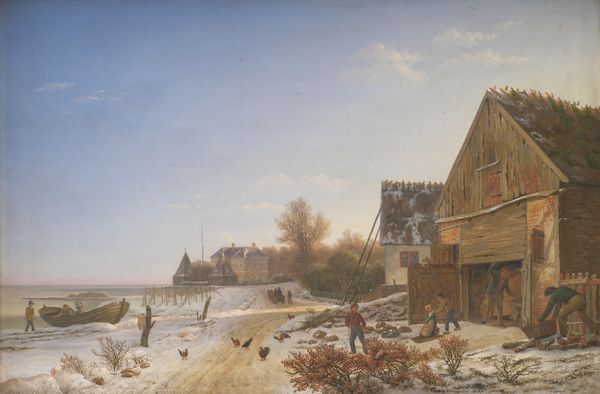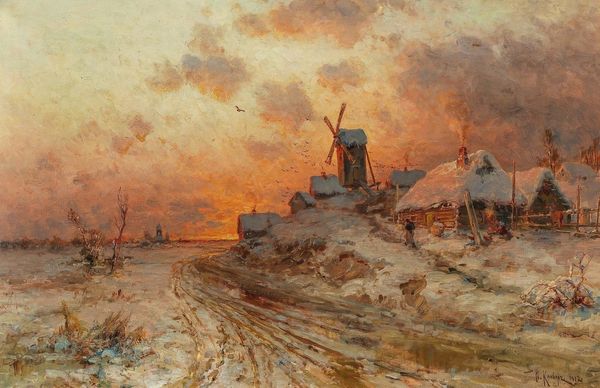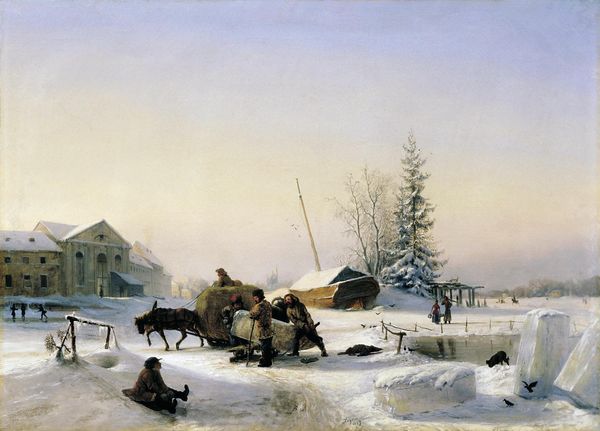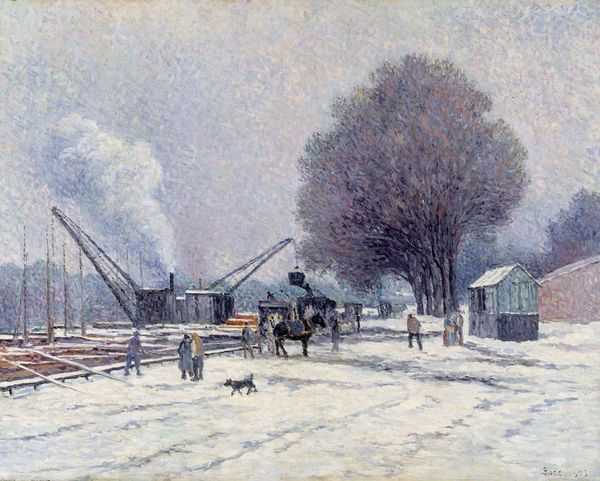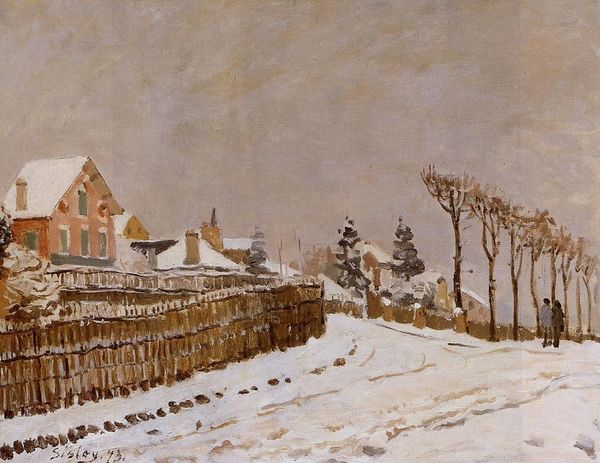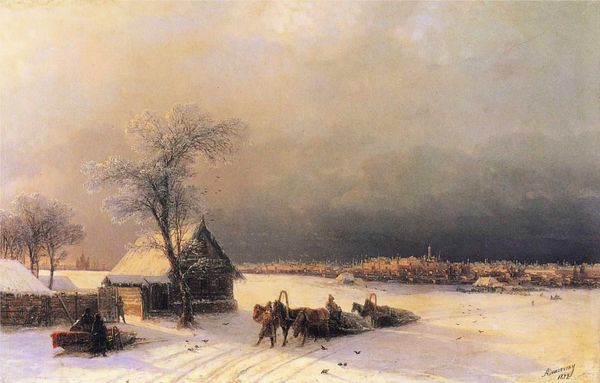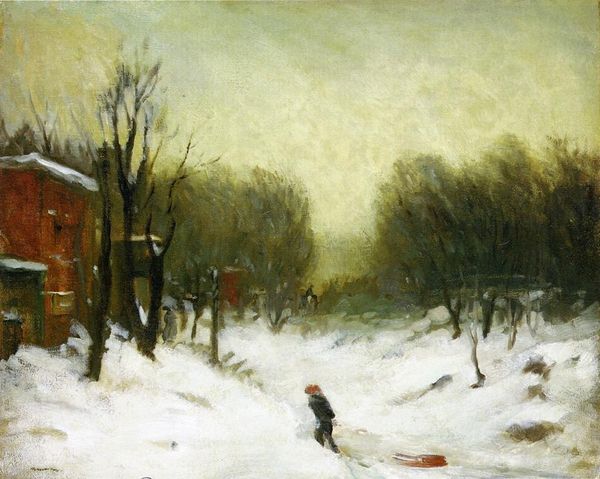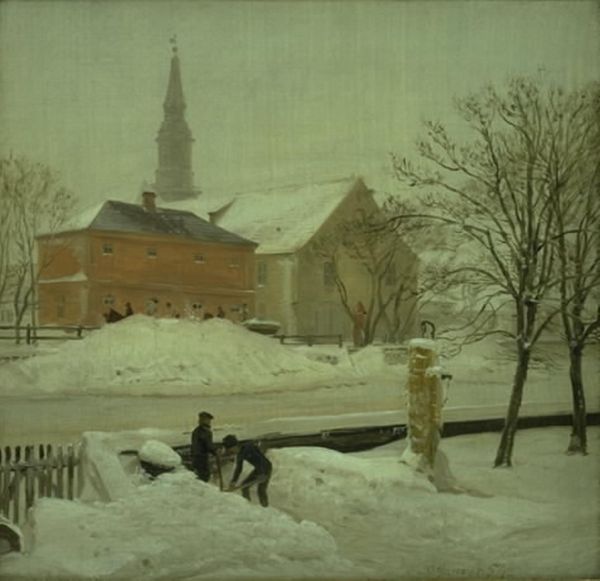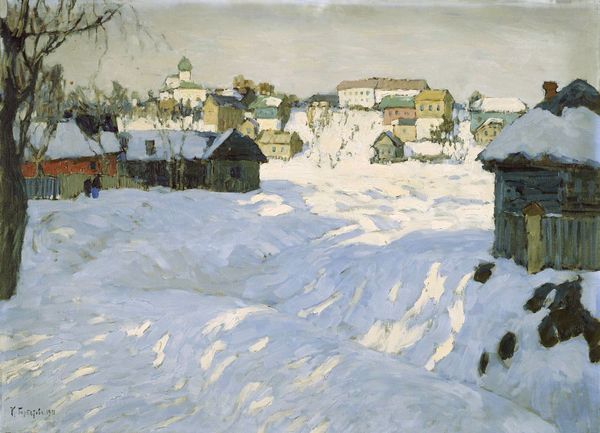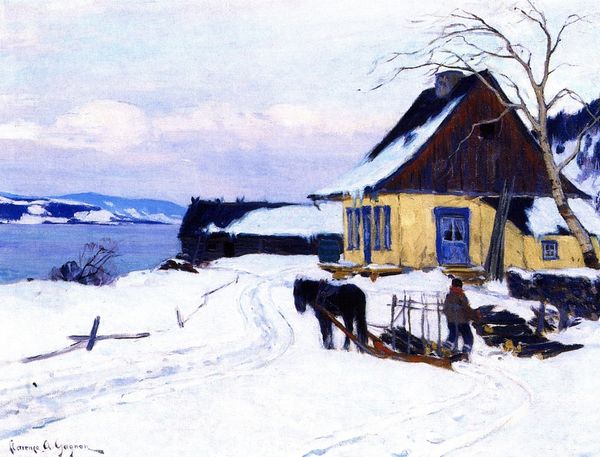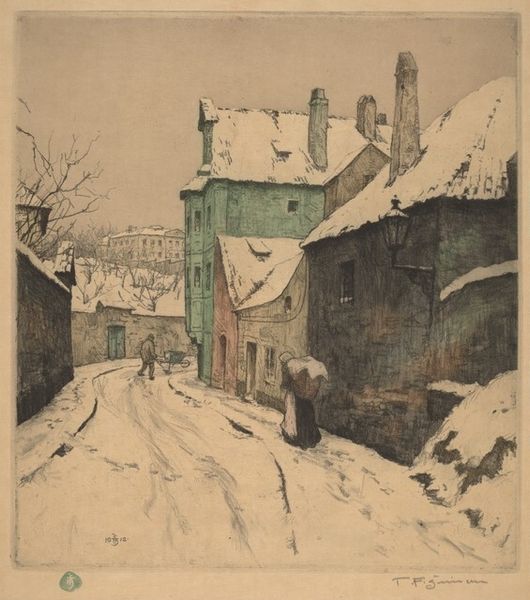
Dimensions: 51.1 x 65.8 cm
Copyright: Public domain
Curator: Vasily Perov’s “Last Tavern at Town Gate,” painted in 1868, offers us a glimpse into the stark realities of rural life in Russia. Editor: It certainly does. My first impression is how desolate the scene is; a twilight melancholy seems to seep from the canvas, from the muted colors, and from that almost palpable sense of cold. Curator: Observe the figure huddled on the sled – bundled in thick fabrics against the elements. This image carries the weight of cultural memory; Perov's emphasis on capturing authentic, quotidian life makes this painting much more than a simple landscape. It presents an empathetic study of hardship, consistent with Perov’s tendency to question power and corruption. Editor: Indeed, the materiality here is telling. Look at the texture he achieves with oil paint – mimicking the rough, homespun quality of the clothing and the crude construction of the sled itself. This level of detail makes the figures seem almost sculpted from the very land that surrounds them. You can almost feel the weight of the labor etched in every detail, from the construction to the sled's burden to be carried forward. Curator: Notice how the light from within the buildings—particularly the namesake Tavern—offers only a limited kind of refuge. Perov uses the light—as with those golden architectural symbols far on the horizon—as an archetypal beacon offering hope against the darkness, against whatever that character's next journey may demand from them. There is a story about to unfold beyond this scene, pregnant with meaning. Editor: And that building provides literal illumination as to the social conditions – the contrast between inside and out is sharply delineated. Considering Perov's involvement with the Peredvizhniki movement, it is clear how important using paint itself—as a physical, workable medium—is to rendering social and political critique in comprehensible terms. Curator: Ultimately, Perov uses very accessible symbols to create a far more substantial cultural touchstone, the scene resonates so deeply even generations later because the image holds the full weight of humanity between hard times, journeys and fleeting glimpses of shelter. Editor: A beautiful, stark example of how even seemingly simple scenes – in the hands of a master using careful attention to detail, material and making – become charged social commentaries.
Comments
No comments
Be the first to comment and join the conversation on the ultimate creative platform.
